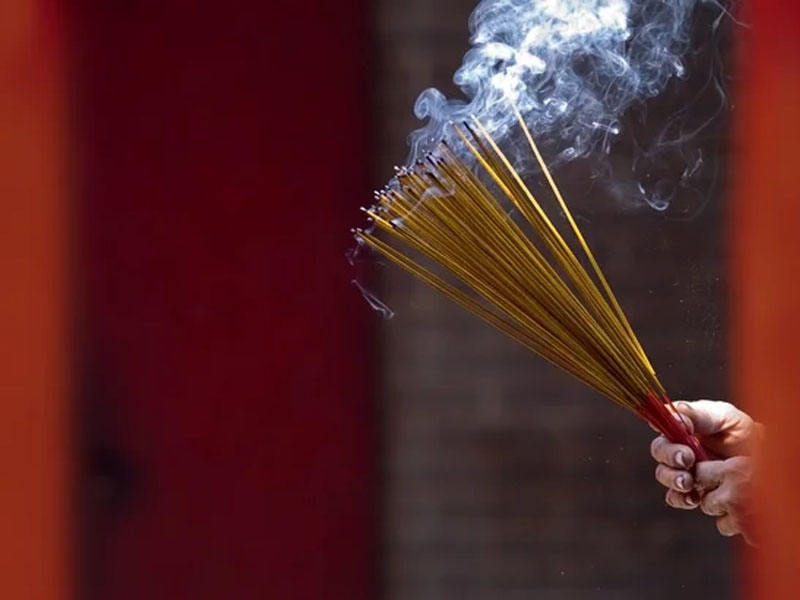
Making of Incense Stick:
Incense comes from tree resins, as well as some flowers, seeds, roots, and barks that are aromatic.
The basic ingredients of an incense stick are bamboo sticks, paste (generally made of charcoal powder or wood powder and joss/jiggit/gum/tabu powder – an adhesive made from the bark of litsea glutinosa and other trees), and the perfume ingredients – which traditionally would be a powder of mixed ground ingredients.
But now a days, Water is added to make a paste, a little saltpeter (potassium nitrate) is mixed in to help the material burn uniformly, and the mix is processed in some form to be sold for burning. In India, this form is the agarbatti or incense stick, which consists of the incense mix spread on a stick of bamboo.

Scientific Reason: Why do most of the Indians draw Rangoli in front of their houses
There is a separate field of science called Cymatics which deals with the relationship between vibrations and the geometric patterns corresponding to it.
The Cymatic patterns look nothing like the rangoli patterns.
Rangoli is not just an art but actually a science of vibration pattern which was discovered by Indians thousands of years ago and been made a part of the culture for spiritual, aesthetic & scientific purposes. The reason a rangoli is drawn at the entrance of a house is because of its calming effect on a visitor who is just about to enter into the house. It manifests into vibrations (brainwaves) in the visitor’s mind, putting him at ease, making him comfortable and happy.
Other reason is in ancient times , our ancestor used make rangoli with rice flours in front of house so that ants and other insects eat and will use stay outside the house and do not enter house(reports say ants die after eating rice) so other creatures like snakes, lizards, frogs etc never get into the house.

World Veterinary Day
The day is celebrated on the last Saturday of April with a different theme. The annual event has been established to highlight and promote the lifesaving work performed by veterinarians all over the world.
===================
BORN TODAY
Dhundiraj Govind Phalke, popularly known as Dadasaheb Phalke (pronunciation ) (30 April 1870 – 16 February 1944), was an Indian producer-director-screenwriter, known as the Father of Indian cinema.
His debut film, Raja Harishchandra, was the first Indian movie in 1913, and is now known as India’s first full-length feature film.
He made 95 feature-length films and 27 short films in his career
An honorary award from the Dadasaheb Phalke Academy Mumbai was introduced in the year 2001, for lifetime achievement in Indian cinema.
IDIOMS & PHRASES:
Dhundiraj Govind Phalke, popularly known as Dadasaheb Phalke (pronunciation ) (30 April 1870 – 16 February 1944), was an Indian producer-director-screenwriter, known as the Father of Indian cinema.
His debut film, Raja Harishchandra, was the first Indian movie in 1913, and is now known as India’s first full-length feature film.
He made 95 feature-length films and 27 short films in his career
An honorary award from the Dadasaheb Phalke Academy Mumbai was introduced in the year 2001, for lifetime achievement in Indian cinema.

A Carrot is rich source of Vitamin B6, they are easily available during winters. One medium carrot stick supplies as much Vitamin B6 as a glass of milk. Plus, carrots are a great source of fibre and Vitamin A as well.
*************
Click here to join:
https://t.me/joinchat/llGA9DGZF9xmMDc1
 |
Ch Narmada Naveen Kumar |







